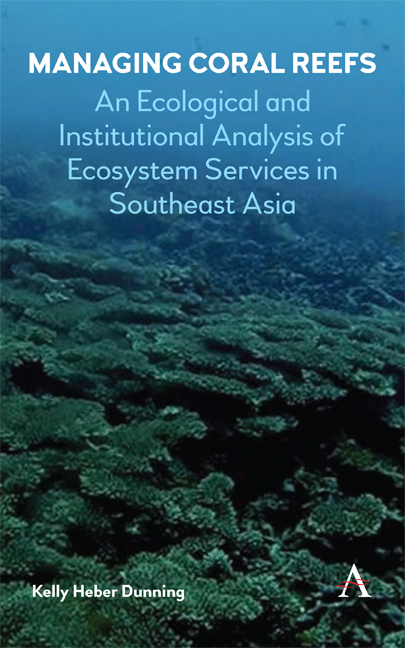 Managing Coral Reefs
Managing Coral Reefs Book contents
- Frontmatter
- Contents
- List of Figures
- List of Tables
- Acknowledgments
- List of Abbreviations
- 1 Introduction
- 2 Theory, Practice and Policy Context of Coral Reef Management
- 3 Governing Natural Resources in Indonesia and Malaysia
- 4 Case Study Sites and the Coral Triangle
- 5 Integrated Management of Marine Protected Areas
- 6 Legitimate Marine Protected Areas
- 7 Adaptive Capacity of Marine Protected Areas
- 8 Policy Recommendations for Marine Protected Area Management in Developing Countries
- Appendix A Research Design
- Appendix B Data and Methods
- Appendix C Coral Cover Results
- References
- Index
Appendix C - Coral Cover Results
Published online by Cambridge University Press: 16 August 2018
- Frontmatter
- Contents
- List of Figures
- List of Tables
- Acknowledgments
- List of Abbreviations
- 1 Introduction
- 2 Theory, Practice and Policy Context of Coral Reef Management
- 3 Governing Natural Resources in Indonesia and Malaysia
- 4 Case Study Sites and the Coral Triangle
- 5 Integrated Management of Marine Protected Areas
- 6 Legitimate Marine Protected Areas
- 7 Adaptive Capacity of Marine Protected Areas
- 8 Policy Recommendations for Marine Protected Area Management in Developing Countries
- Appendix A Research Design
- Appendix B Data and Methods
- Appendix C Coral Cover Results
- References
- Index
Summary
This appendix provides an in-depth look at living coral cover at each site.
Comparing Coral Cover across Malaysia and Indonesia
In terms of the percentage of living coral cover, the mean coral cover across the two Malaysian sites including the Perhentian Islands and Tioman Island was 44 percent (SD = 0.31) whereas the mean coral cover across the three Balinese sites including Lovina, Pemuteran and Amed was 37 percent (SD=0.31). Both estimates fall within the “medium” range (on the Likert scale of bad, medium, good and excellent; fromGomez and Yap 1988). Even though this study shows the Malaysian sites as having slightly more coral cover, statistically these sites are not significantly different at the p = 0.05 alpha level that would allow us to reject the null hypothesis that there is no difference.
Other studies have shown that living coral cover is not the most responsive ecological indicator when it comes to comparing across management typologies, and this study agrees with those findings (McClanahan et al. 2006). Given the Indonesian sites see 27 percent more of the impact of visitors that Malaysian reefs see, you would expect Malaysian reefs to exhibit coral cover on a different categorical level from Indonesia. Tables C.1 and C.2 display each field site broken down by location, as well as the mean percentage of living coral cover based on an average of 40 individual point estimates per replication, further broken down by individual replications of which there are at least three per site, and summarized with a mean estimate per reef site.
The individual site averages for Malaysia are as follows: 56 percent cover for Tioman Island (SD = 0.14) and 31 percent (SD = 0.28) for the Perhentian Islands. For Indonesia, Amed has 43 percent cover (SD = 0.25), Pemuteran 44 percent cover (SD = 0.17) and Lovina 16 percent cover (SD = 0.11), the only site to dip into the poor category.
- Type
- Chapter
- Information
- Managing Coral ReefsAn Ecological and Institutional Analysis of Ecosystem Services in Southeast Asia, pp. 181 - 196Publisher: Anthem PressPrint publication year: 2018


